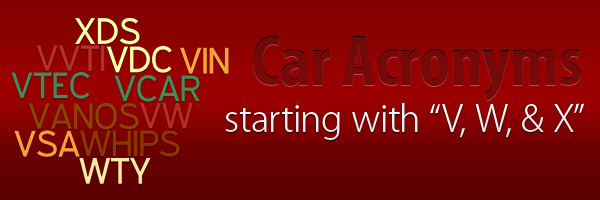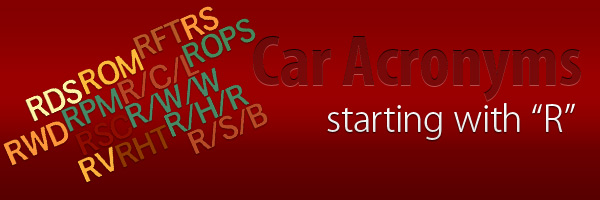IC – Inflatable Curtain airbag
This term refers to a vehicle safety restraint system in a motor vehicle that is used to restrain a vehicle’s occupants in the case of an automobile collision. An inflatable airbag is made up of an airbag body that is folded up to form a long airbag package with an indication element to recognize a twisted attachment status of the longitudinal airbag. These airbags are used to cushion the occupant of a vehicle in the instance of a crash or car accident.
ICC – Intelligent cruise control, Nissan distance control system, see also ACC
What makes Intelligent Cruise Control in Nissan’s distance control system different from other cruise control systems is that this one functions across the full-speed range, whereas other systems function within a range of 5-100 km/hour. This system functions through the use of a navigation system that can adjust the vehicle’s speed based on the system’s detection of upcoming curves in the road. When driving behind another vehicle, the Intelligent Cruise Control modulates the distance between the cars and adjusts distance accordingly, making for a safer, more comfortable drive.
ICE – In Car Entertainment
This term refers to an assemblage of hardware devices that are installed into a motor vehicle to facilitate the use of audio or visual forms of media and navigation systems. Included in this collection are CDs, DVDs, USB, surround sound, and occasionally video gaming equipment like consoles that are installed into the vehicle for entertainment purposes. In Car Entertainment incorporates internet installations, car speakers and amplifiers, GPS systems, television, and gaming options into the vehicle.
IDI – Indirect (Diesel) Injection
This term refers to a fuel injection in an internal combustion diesel engine, in which fuel is injected into a pre chamber rather than being directly injected into a combustion chamber. Upon fuel being injected into a pre chamber, combustion will begin and will disseminate into the central combustion chamber. In contrast to direct injection which employs slow-moving air and fast-paced fuel, indirect injection uses fast-moving air which mixes the air and the fuel together.
IDIS – Integrated driver information system, similar to navigation system
This term refers to a driver control navigation system that indicates the vehicle’s present operating status through the use of an integrated on-board computer. An integrated driver information system offers several features such as a speed warning function that lets the driver store a maximum speed that they wish not to exceed. It offers information on external temperature, door and luggage compartment open warning signals, telephone number book, and navigation directions as well.
IFS – Independent Front Suspension
This term broadly refers to any suspension system for an automobile that lets each wheel on the same axle to move vertically to react individually to bumps in the driven road. In Independent Front Suspension, there is independent suspension on the front wheels which allows each of the wheels at the front to respond to the road independently, undisturbed by the other wheels. Easier handling of the vehicle and a smoother ride are facilitated with Independent Front Suspension.
IMMOB – Engine Immobilizer
This term refers to an electronic device that is used to ensure an automobile engine does not start unless the correct key is used, so as to prevent a car from being illegally wired to start. An Engine Immobilizer functions through the use of an identification system that is coded in the key’s ignition area. The fuel-injection sequence is only started when the car’s Engine Control Unit (ECU) has validated that the coded key is correct and proper.
IPS – Intelligent Protection System, integrated two-stage airbag system with retractable pedals, head/shoulder airbags, and active headrests
An Intelligent Protection System is an assemblage of safety precautions that work in tandem to deliver complete protection to passengers of motor vehicles. Included in this collection of safety measures are integrated two-stage airbag system with retractable pedals, head and shoulder airbags, and active headrests. Often times, the following are incorporated into a vehicle’s Intelligent Protection System: Electronic brake-force distribution (EBD), Anti-lock braking system (ABS), Emergency Brake Assist (EBA), Electronic Stability Programme (ESP), and Traction control system (TCS).
IRS – Independent Rear Suspension
This term refers to any suspension system for a motor vehicle that allows each wheel on the same axle to move vertically to react individually to bumps or dips in the road. In Independent Rear Suspension, there is independent suspension on the rear wheels which lets each of the wheels at the back respond to the road independently, uninfluenced by the direction of the front wheels. Smoother handling of the vehicle and a more comfortable ride are facilitated with Independent Rear Suspension.
IVD – Interactive vehicle dynamics
This term refers to a system that incorporates and maintains the antilock brake system, traction control system and the yaw stability functions. Increased steering control is achieved with Interactive Vehicle Dynamics by proportioning brake pressure to individual wheels on the motor vehicle. IVD detects if the vehicle is being understeered or oversteered and the controller will employ the brakes on a specific wheel to lower the engine torque and increase traction. The takeaway is enhanced driver steering control and enhancing handling performance.









